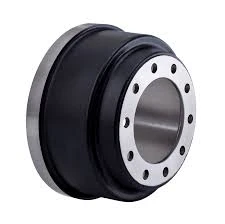
-
 Afrikaans
Afrikaans -
 Albanian
Albanian -
 Amharic
Amharic -
 Arabic
Arabic -
 Armenian
Armenian -
 Azerbaijani
Azerbaijani -
 Basque
Basque -
 Belarusian
Belarusian -
 Bengali
Bengali -
 Bosnian
Bosnian -
 Bulgarian
Bulgarian -
 Catalan
Catalan -
 Cebuano
Cebuano -
 Corsican
Corsican -
 Croatian
Croatian -
 Czech
Czech -
 Danish
Danish -
 Dutch
Dutch -
 انگريزي
انگريزي -
 Esperanto
Esperanto -
 Estonian
Estonian -
 Finnish
Finnish -
 French
French -
 Frisian
Frisian -
 Galician
Galician -
 Georgian
Georgian -
 German
German -
 Greek
Greek -
 Gujarati
Gujarati -
 Haitian Creole
Haitian Creole -
 hausa
hausa -
 hawaiian
hawaiian -
 Hebrew
Hebrew -
 Hindi
Hindi -
 Miao
Miao -
 Hungarian
Hungarian -
 Icelandic
Icelandic -
 igbo
igbo -
 Indonesian
Indonesian -
 irish
irish -
 Italian
Italian -
 Japanese
Japanese -
 Javanese
Javanese -
 Kannada
Kannada -
 kazakh
kazakh -
 Khmer
Khmer -
 Rwandese
Rwandese -
 Korean
Korean -
 Kurdish
Kurdish -
 Kyrgyz
Kyrgyz -
 Lao
Lao -
 Latin
Latin -
 Latvian
Latvian -
 Lithuanian
Lithuanian -
 Luxembourgish
Luxembourgish -
 Macedonian
Macedonian -
 Malgashi
Malgashi -
 Malay
Malay -
 Malayalam
Malayalam -
 Maltese
Maltese -
 Maori
Maori -
 Marathi
Marathi -
 Mongolian
Mongolian -
 Myanmar
Myanmar -
 Nepali
Nepali -
 Norwegian
Norwegian -
 Norwegian
Norwegian -
 Occitan
Occitan -
 Pashto
Pashto -
 Persian
Persian -
 Polish
Polish -
 Portuguese
Portuguese -
 Punjabi
Punjabi -
 Romanian
Romanian -
 Russian
Russian -
 Samoan
Samoan -
 Scottish Gaelic
Scottish Gaelic -
 Serbian
Serbian -
 Sesotho
Sesotho -
 Shona
Shona -
 Sindhi
Sindhi -
 Sinhala
Sinhala -
 Slovak
Slovak -
 Slovenian
Slovenian -
 Somali
Somali -
 Spanish
Spanish -
 Sundanese
Sundanese -
 Swahili
Swahili -
 Swedish
Swedish -
 Tagalog
Tagalog -
 Tajik
Tajik -
 Tamil
Tamil -
 Tatar
Tatar -
 Telugu
Telugu -
 Thai
Thai -
 Turkish
Turkish -
 Turkmen
Turkmen -
 Ukrainian
Ukrainian -
 Urdu
Urdu -
 Uighur
Uighur -
 Uzbek
Uzbek -
 Vietnamese
Vietnamese -
 Welsh
Welsh -
 Bantu
Bantu -
 Yiddish
Yiddish -
 Yoruba
Yoruba -
 Zulu
Zulu
Guide to Identifying GM Brake Drum Specifications and Compatibility for Optimal Performance
GM Brake Drum Identification A Comprehensive Guide
Brake drums play a crucial role in the stopping mechanism of vehicles, particularly those manufactured by General Motors (GM). Proper identification of these components is essential for maintenance, repair, and replacement needs. This article aims to provide a comprehensive overview of GM brake drum identification, helping vehicle owners and technicians understand the key aspects involved.
Understanding Brake Drums
Brake drums are components of drum brake systems, which have been widely used in various automotive applications. When the brake pedal is engaged, brake shoes are pressed against the inner surface of the drum, creating friction that slows down or stops the vehicle. Due to their complexity and variations, it is vital to correctly identify the specific brake drum suitable for a GM vehicle.
Key Identification Features
1. Part Numbers Every brake drum produced by GM is assigned a unique part number, which is the most reliable way to identify the right component. This number can often be found stamped on the drum itself. When searching for a replacement, having this part number on hand will make the process much more efficient.
2. Size and Dimensions Brake drums come in various sizes and dimensions, which are typically measured in diameter and width. To identify the correct drum, it's important to measure these dimensions accurately. Most commonly, GM brake drums range from 9 to 12 inches in diameter. Measuring tools like calipers can help obtain precise measurements.
gm brake drum identification

3. Type of Vehicle Identifying the specific make and model of the GM vehicle is crucial, as different models may require different brake drum specifications. For instance, the brake drums for a Chevrolet Impala may differ significantly from those used in a GMC Sierra. Consulting the vehicle’s manual or manufacturer documentation can provide insights into the correct drum specifications.
4. Bolt Pattern The bolt pattern, which refers to the number of lug holes and their arrangement, is another critical feature. Most GM brake drums typically have a 5-bolt pattern, though variations exist depending on the model and year. Counting the bolts and determining their spacing can help further confirm identification.
5. Material Composition Most brake drums are made from cast iron or a composite material. Understanding the construction material can also aid in identification. If a drum is particularly lightweight or features a shiny surface, it may suggest a composite material, while a heavier and thicker drum is likely to be cast iron.
6. Visual Inspection for Wear and Damage Before replacement, it's important to visually inspect the brake drum for wear or damage. Signs of excessive wear, cracks, or deep grooves can indicate that the drum needs replacement. Checking the inner surface and measuring for warping can help assess the drum’s condition.
Conclusion
Identifying the proper brake drum for your GM vehicle is vital for ensuring optimal braking performance and safety. By focusing on key identification features such as part numbers, dimensions, vehicle type, bolt patterns, and material composition, vehicle owners and mechanics can make informed decisions about brake drum replacements. Regular inspection and maintenance of brake components will not only enhance driving safety but also contribute to the overall longevity of the vehicle. Whether you are a seasoned mechanic or a DIY enthusiast, understanding GM brake drum identification is an invaluable skill that will serve you well in maintaining the reliability of your vehicle's braking system.
-
What Are Drum BrakesخبرونJul.07,2025
-
Understanding Brake Drum MaterialخبرونJul.07,2025
-
Semi-Trailer Brake Drum: A Key Component for Extreme Loads and Long-Distance TransportخبرونJul.07,2025
-
Drum Brake Pads for SaleخبرونJul.07,2025
-
Brake Drums for SaleخبرونJul.07,2025
-
Brake Drum ManufacturerخبرونJul.07,2025
-
Aluminum Brake Drums: The Future of High-Performance CarsخبرونJul.07,2025
